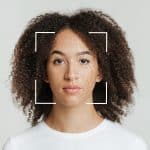ROC introduces software to stop growing threat of biometric injection attacks

Colorado-based ROC has introduced software to detect deepfakes and biometric injection attacks that bypass traditional liveness detection technologies.
The new Camera Injection Attack Detection draws on proprietary algorithms to identify the unique digital signatures left by deepfakes, virtual cameras, face emulators and other synthetic inputs, according to the announcement. The software monitors device integrity and user activity in real time to flag signals of fraud and other anomalies.
The technology identifies deepfakes, virtual cameras and other synthetic data sources with precision of 95 percent or higher, ROC says.
Injection attacks on video calls, biometric identity verification and authentication systems exploded in 2024, with nine times more incidents observed than in 2023, according to iProov’s Threat Intelligence Report 2025. Virtual camera exploits increased even more, reaching 28 times more often than the previous year.
These attacks bypass the sensor level, where biometric presentation attack detection (PAD) algorithms are typically applied, to dodge liveness checks. Stolen or synthetic data is then injected into the identity verification process to disguise the fraudulent user.
“Powered by advances in generative AI, cybercriminals are constantly upping their game to circumvent ID verification systems, and traditional defenses can’t keep up,” said Blake Moore, COO of ROC. “Injection attacks are among the most serious threats facing digital identity today. Our camera forensics technology is a powerful response to this growing challenge, offering unmatched resilience against the emerging wave of AI-driven identity fraud.”
ROC’s Camera Injection Attack Detection compliments the company’s Identity Toolkit, which includes face biometrics matching, single-frame passive liveness detection, age estimation and face analytics.
The company also touted its leading scores in NIST’s 1:1 and 1:N face verification evaluations in an announcement last month highlighting the speed and efficient resource utilization of its algorithms.
Article Topics
biometric liveness detection | biometrics | deepfake detection | face biometrics | injection attacks | ROC | synthetic data






Comments